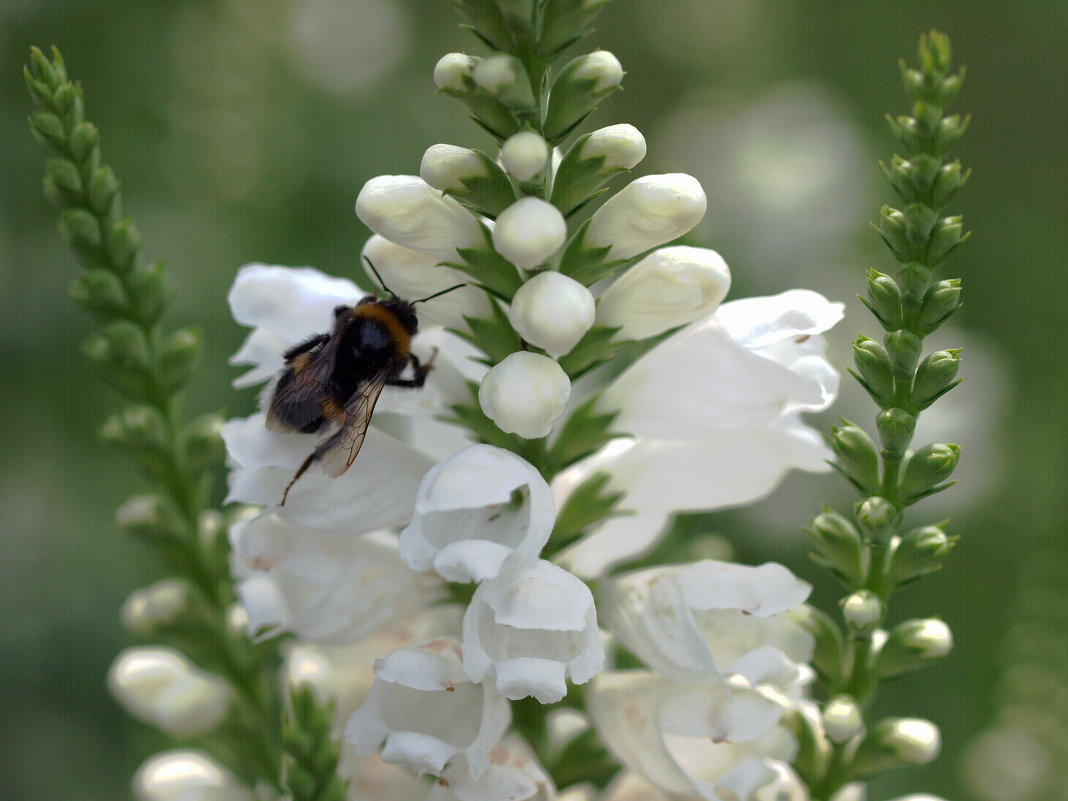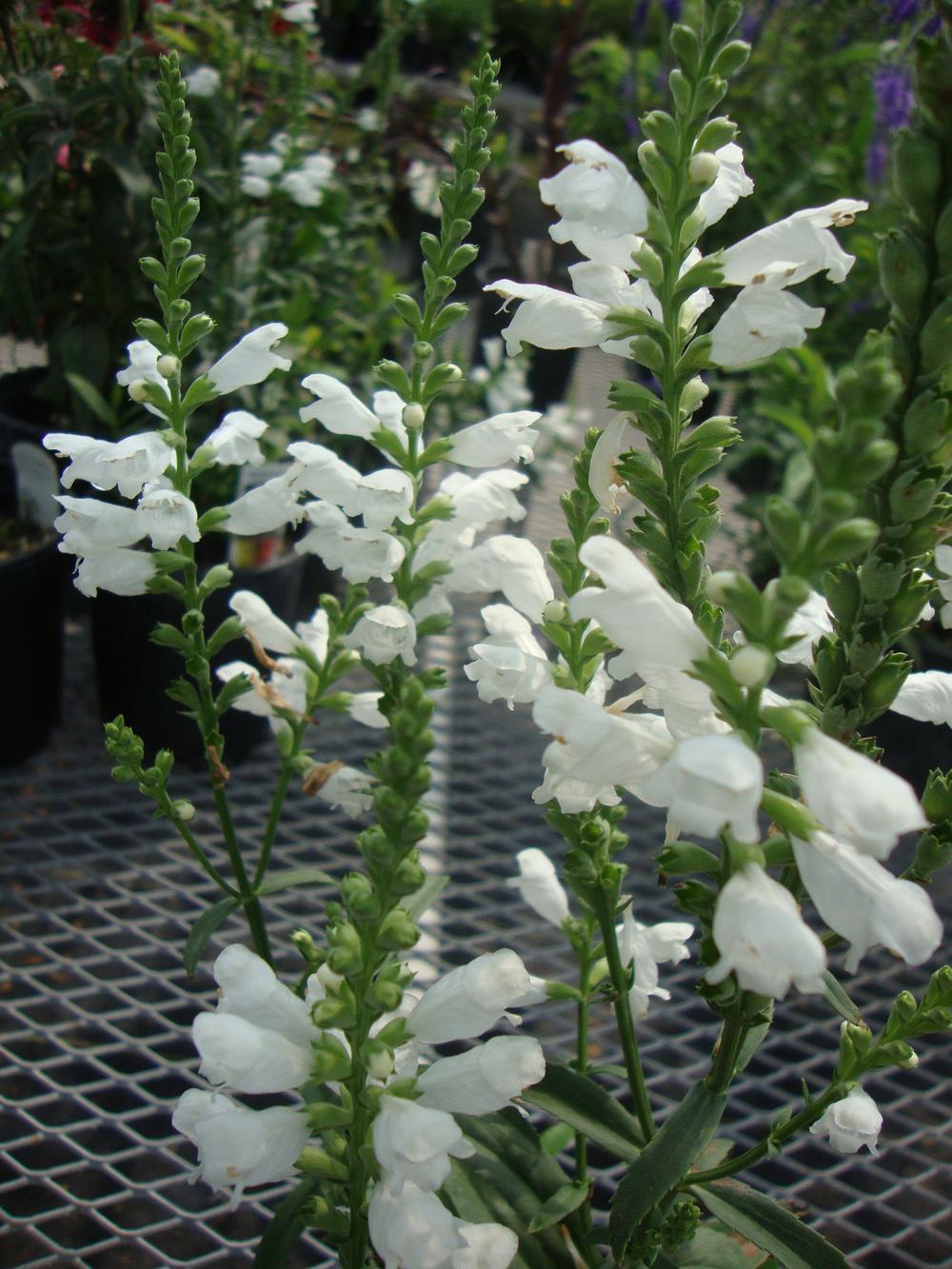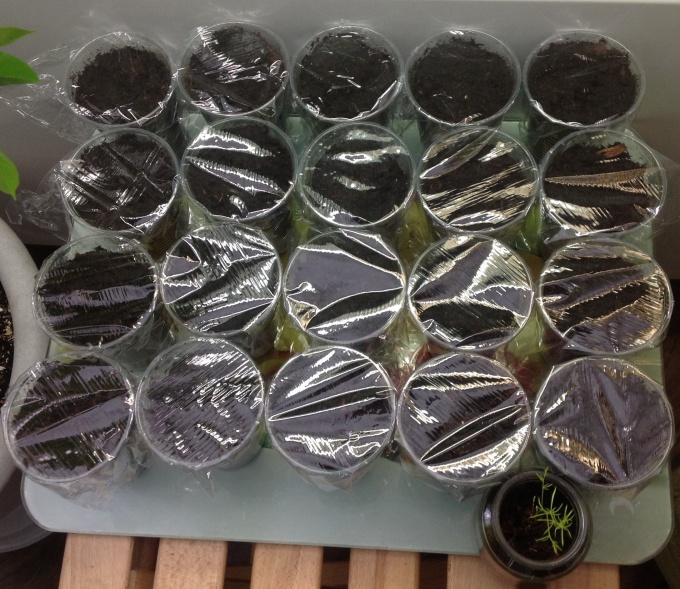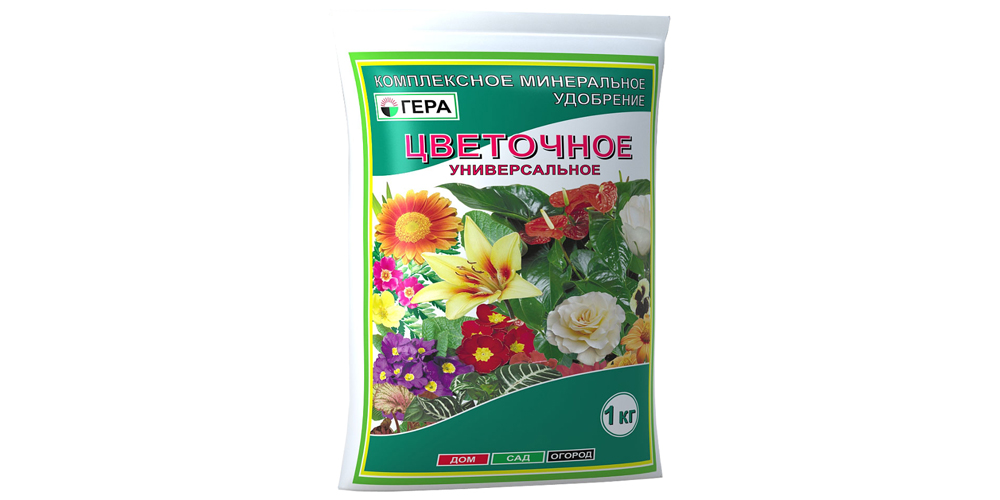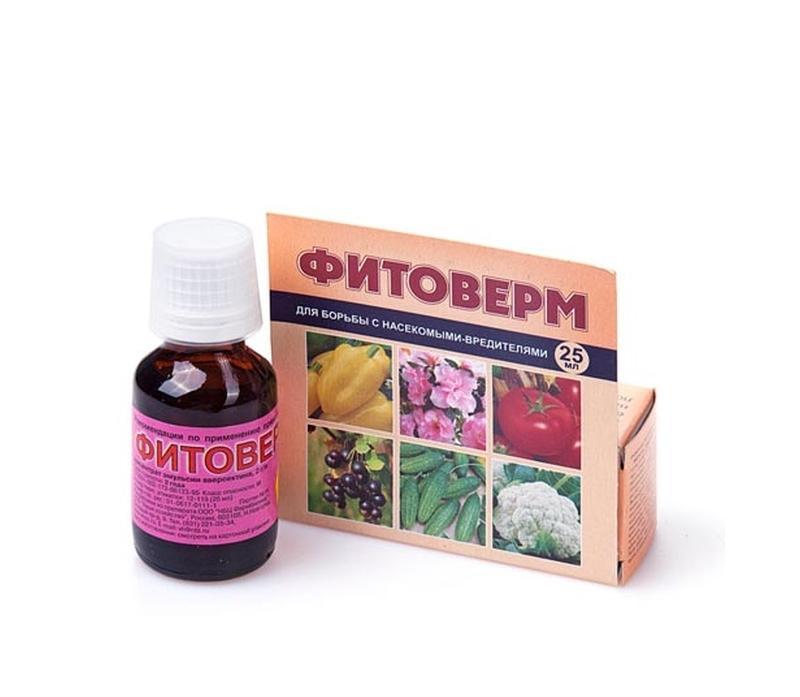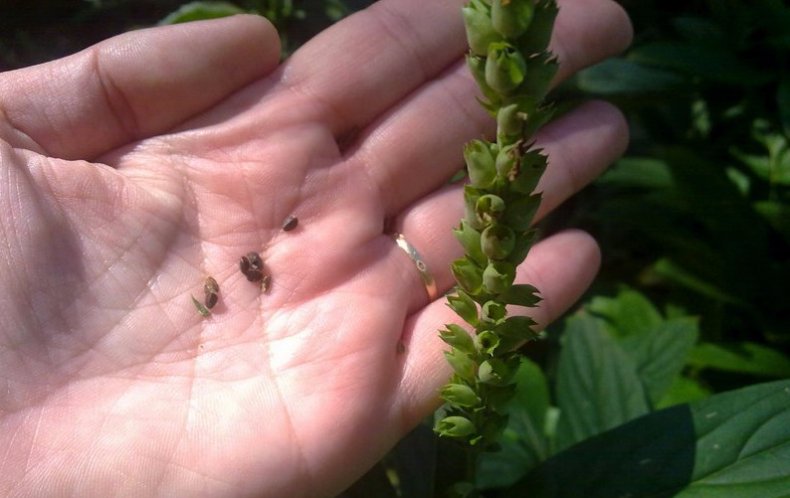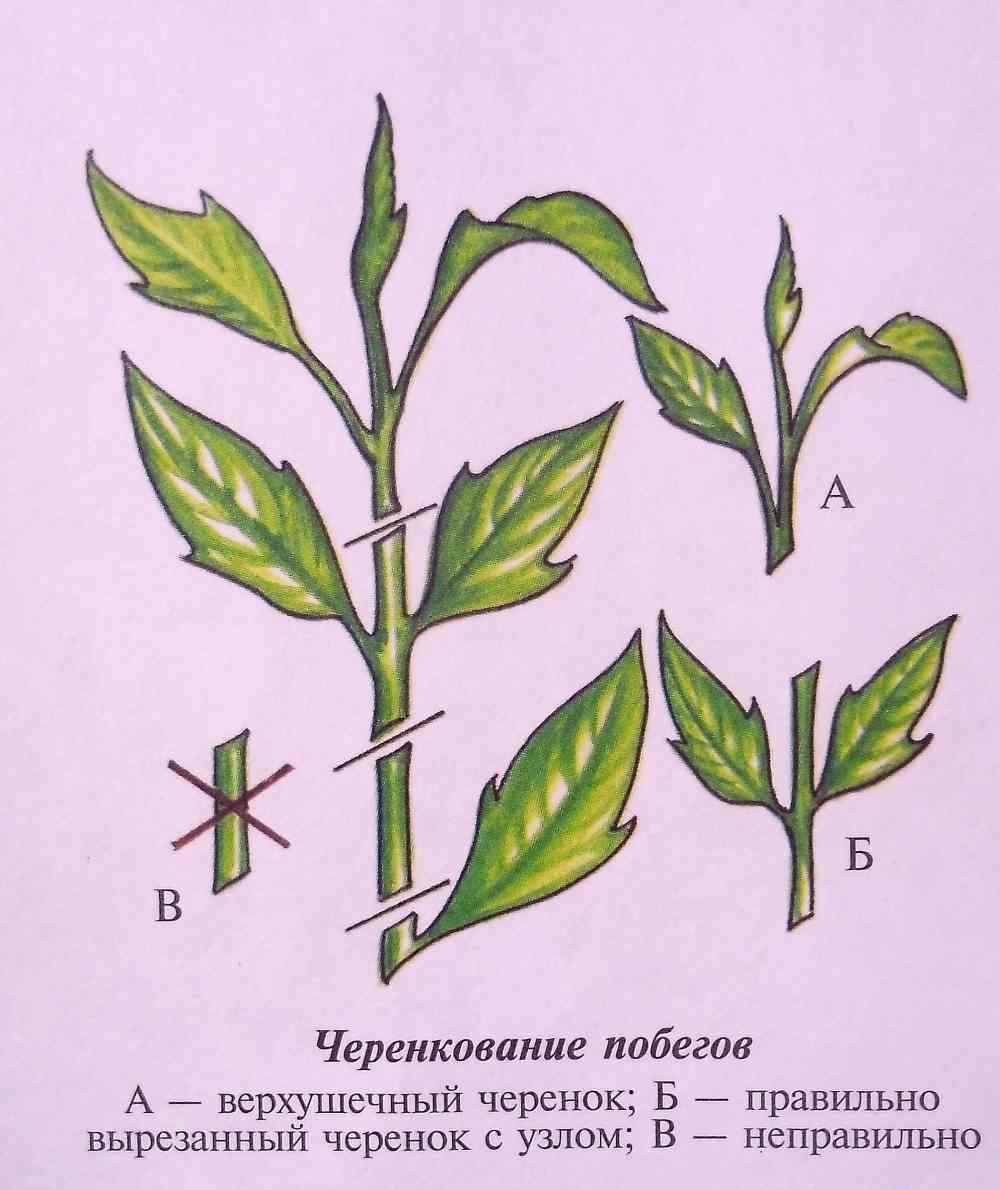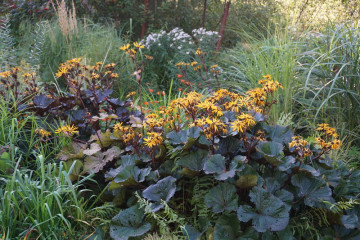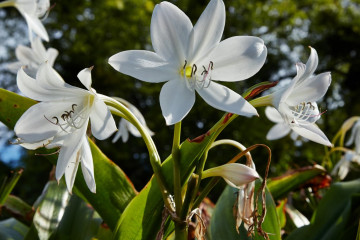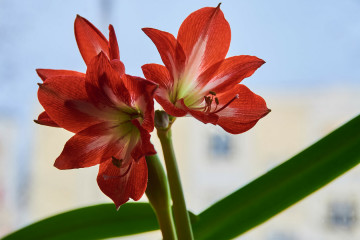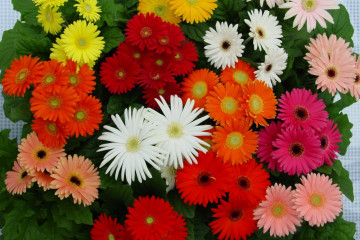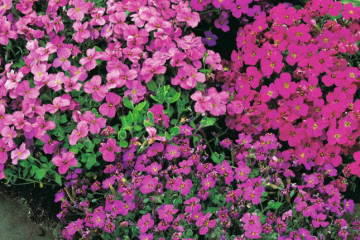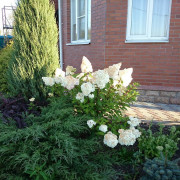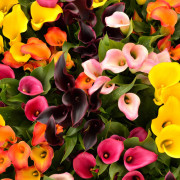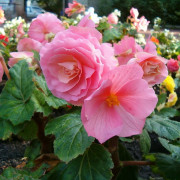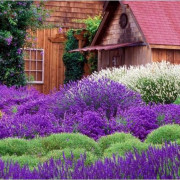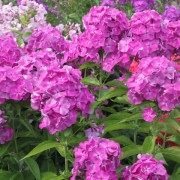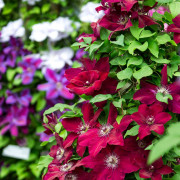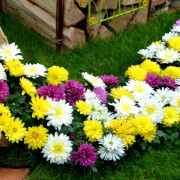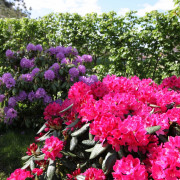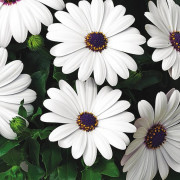Physostegia flower - outdoor care
Content:
Physostegia flower refers to graceful undemanding perennials in the country. High flower shoots with luxurious buds are very effective. Physostegia virginiana, which is usually cultivated by gardeners, is ideal for a flower bed, will delight you with bright flowers that are arranged in rows vertically.
Description of physostegy
The herbaceous perennial culture belongs to the Lamb family, or Yasnotkovye. The genus contains from 3 to 12 species (according to various sources). Height of tetrahedral erect stem ranges from 0.6 to 1 m.
In July, spike-shaped 30-centimeter inflorescences are formed. After a certain time, snow-white, pinkish or lilac flowers bloom.
The decorative period, which begins in July and lasts until the arrival of autumn, is 35-50 days.
Ripening of seeds on the lower tiers, which have faded, is accompanied by the blooming of buds on the apical part. The fruits are small nuts. The culture belongs to honey plants. It has a pleasant aroma that attracts bees to the garden area.
The word translated from Greek means a bubble - from a swollen flower cup. This property is reflected in another name - a false snakehead. Gardeners grow in open flower beds only virgin physostegia, other species are wild-growing. The flower fell in love with summer residents, the culture is undemanding to care.
Varieties and varieties
Virginia decorates flower beds before the onset of cold weather. The following varieties are in demand among florists:
- Physostegia virginiana physostegia virginiana Alba. The height of the bushes of the physostegia of Alba reaches 0.8 m. The flowers have a white color. Physostegia leaves are white with denticles along the edges, smooth in the middle.
- Physostegia is variegated. The plant is classified as an unusual variegated varieties. Leaves Variegata rich green in the middle with a white edging along the edge. The flowers have a pink color. Physostegia Variegata grows up to 1 m. A distinctive feature of Variegata shoots is resistance to lodging.
- Physostegia is variegated. A distinctive feature of the flower is intense green foliage with a white border around the edges. The color of the flowers is lilac-pinkish.
- The Pink Queen. The flower grows up to 0.7 m. The flowers have a pinkish tint.
- Physostegia physostegia Rosea. The flower grows up to 0.6 m. It has small pink or light lilac flowers. The peak of decorativeness of pink physicalostegia falls on July-August.
- Physostegy Crystal peak white. In a culture with snow-white inflorescences, the growth of a bush is 40-45 cm. It easily propagates by self-sowing and seeds, blooms during cultivation in the first year.
- Physostegy Summer Snow. The height of the bush is 110 cm, the flowers are snow-white. The flower needs nourishment and garter stems.
Agrotechnics
Planting physostegy in unprotected ground
If you want to breed physostegia, planting seedlings is performed on open beds in the last decade of May or at the beginning of June.The unassuming flower is grown in a flower bed that is illuminated by the sun. Partial shade is also suitable. He likes moisture in the soil, looseness and enrichment with humus. Sandy loam, loam or black soil are ideal.
Planting of seedlings - with an interval of 25 cm. The rhizome of physostegy is distinguished by its aggressiveness: it rapidly grows and displaces other crops from the flower garden.
Limiters are installed to prevent negative impacts. The flowers are planted in an open soil in a container that limits the development of rhizomes: just an old bucket or saucepan without a bottom, a piece of pipe.
The dishes are buried so that the thickness of the soil is 20 to 50 mm from the top of the pot to the garden bed. Gardeners often dig in fences made of wood or metal, fragments of slate, plastic around the perimeter of the flower garden, buried at least 30 cm into the ground.
Sowing seeds of physostegy in open beds
The planting material is laid before winter or early spring. The seedling method affects the endurance of flowers.
Growing seedlings
Seed planting falls in the first decade of March:
- sowing is carried out in boxes or individual cassettes with loose nutrient earth, deepened by 1 cm, and covered with glass or polyethylene from above;
- germination of seeds is carried out in a warm room with good illumination and ventilation, watered regularly;
- sprouts are waiting, after 2 weeks, glass or polyethylene are removed;
- seedlings are protected from drafts, direct rays of the sun, the soil is periodically loosened;
- when forming 2 true leaves, thinning of seedlings is carried out, leaving a 10 cm interval between seedlings, or a pick is carried out into pots;
- they are transferred to the garden at the end of the spring season, the seedlings are hardened 14 days before planting, the seedlings are taken out in the daytime in the shade of the garden plot.
Watering and loosening the soil
Regular hydration is a must, especially during hot weather. The state of the earth clod will indicate the need for watering. Avoid waterlogging to prevent the development of fungal infections.
It is useful to loosen the ground after irrigation and rain. Experienced gardeners simplify the care of the crop, sprinkle the beds with mulch.
Recharge and transplant
If the soil is rich in nutrients, physostegia is fed 1 time during the growing season. Just right for a complex mineral dressing. Fertilize the plant before flowering, combining with watering.
The culture acquires a spectacular look in the second or third year of cultivation. Without transplanting, the flower is grown for a maximum of 5 years.
The bushes are removed from the ground, separated and sent back to the flower bed in autumn or spring.
Physostegy transplant and care for it do not differ from the initial landing. The transplanted plant will need abundant moisture. It is recommended to mulch the flower garden.
Pruning
Plants are suitable for cutting. Beautiful bouquets emerge from flowering stems. For decoration, ears of cereals or foliage are added. Shoots are pruned, leaving high hemp. Withered stems with the arrival of autumn are eliminated by collecting seeds. Circumcision of the ground part of the physostegy is carried out entirely for the winter.
Pests and phyto-diseases
A distinctive feature of the flower is resistance to pests and diseases. Although sometimes problems may appear.
Often, phytostegia is attacked by aphids. The parasites suck out plant juices. As a result, the yellowness of the flower, the dropping of the buds. Fight against harmful insects with insecticides and biological products:
- Aktara;
- Spark;
- Actellik;
- Fufanon;
- Fitoverm.
The plant suffers from the following diseases:
- Rust. Illness is indicated by the covering of foliage and shoots with brown-yellowish convex blotches of various sizes. The leaves begin to spin, turn yellow, dry out, the flowers fall off. The disease is opposed by: Altazol and Atlant, Baktofit and Topaz.
- Powdery mildew. Whitish bloom on the sheets, brown spots are symptoms of the disease.There is a gradual drying of the leaves, the fall of flowers, the cessation of the growth of the culture. Preparations will help out: Hom, Bordeaux mixture, Oxyhom, Topaz.
- Gray rot. A rainy summer provokes the development of a fungus. A gray bloom appears on the shoot in the root area. Further, the leaves and inflorescences are infected. If the first symptoms of the disease are found, the bushes are sprayed with Topsin, Fitosporin.
- Root rot. Violation of the rules of care creates an infection. Leaves are deformed, wither, dry up.
How to prepare for wintering
The high winter hardiness of physostegy determines the refusal to shelter culture in countries and regions with warm weather conditions:
- Moldova;
- in the south of Russia;
- Ukraine.
In areas with a cold climate, the stems of the plant are shortened from 20-50 cm above the soil. In the fall, the stems are cut to the base.
Next, the soil is mulched with peat. Dried leaves are also used together with sawdust. Spruce branches are used for shelter.
Flowering period and care after
The flowering of physostegia is the height of summer, it takes 1.5 months. The seeds of the plant are black, ribbed. Windy weather is the reason for self-seeding of physostegia. September is a good time to collect seeds. They are dried in a well-ventilated room and put away for storage.
Reproduction methods
Cuttings
Planting material is prepared in spring or summer. Stocked up by cuttings before the flowering of physostegia. You will need shoots that are cut into 10-12 cm. Each piece requires at least 2 buds.
Cuttings are planted in boxes with moistened sand. Tara is exposed in partial shade. The shoots are sent for wintering in the cool. In the spring, they are transferred to a flower bed.
Layering and dividing the bush
The formed layers are fixed with special brackets to the ground. Digging and replanting are done when they grow up during the year. The bush is divided in the spring until the physostegia blooms or fades.
Rhizome division
Physostegia is propagated in the fall by dividing the rhizome until frost occurs. They dig a bush from the ground, divide it into separate segments, and plant it on a permanent flower bed.
Use in ornamental gardening
Flowers are irreplaceable in landscape design. Physostegia white looks impressive in group plantings, if several tones are combined. It is planted along fences, ornamental shrubs, and paths are bordered with it. It goes well with cultures such as:
- phlox and chamomile;
- dahlias and echinacea;
- lilies and lupines.
Tall crops look great in solo plantings, in the middle of a flower garden, or in the background. White Alba is planted in the center of round flower beds, in flower beds and mixborders. They decorate rocky gardens and lawns with physostegy.
It looks advantageous in a composition with conifers and shrubs: thujas and spruces, dwarf pines and junipers, cypress. White varieties of physicalostegia are harmonious in combination with red roses.
Physostegy is an excellent solution to decorate a summer cottage. A description of the flower and the features of care will help novice summer residents to decorate the site and enjoy its beauty.

